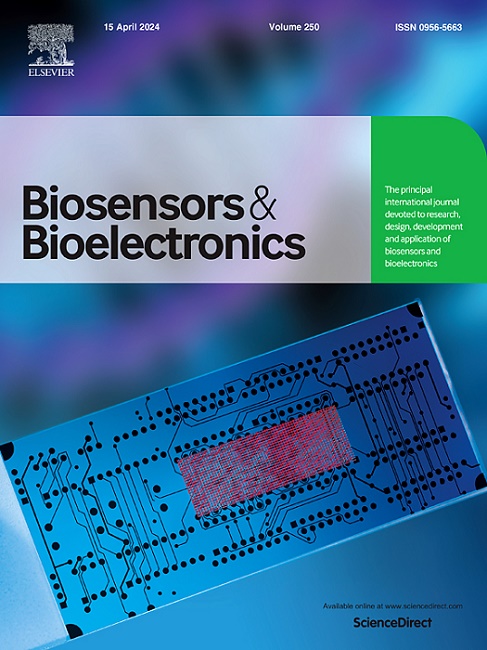DNA功能化金纳米酶在生物传感中的应用。
IF 10.5
1区 生物学
Q1 BIOPHYSICS
引用次数: 0
摘要
近年来,纳米酶已成为极具潜力的替代品,其性能超过了天然酶。其中,金纳米粒子(AuNPs)及其金属杂化体因其合成简单、表面修饰容易、稳定性高、酶活性优异等优点,成为纳米酶研究的热点。通过精确控制纳米颗粒的组装、排列和功能化,DNA与AuNPs的整合极大地促进了高灵敏度和选择性生物传感器的发展。本文全面阐述了DNA与AuNPs结合的三种核心策略,并深入分析了传感技术领域两种应用广泛的酶活性及其背后的催化原理。在此基础上,系统总结了DNA调控金纳米酶活性的各种方法。本文综述了DNA-Au纳米酶在生物传感领域的最新研究进展,重点介绍了DNA-Au纳米酶在食品安全、环境监测和疾病诊断等关键应用领域的研究进展。在文章的结束语中,我们不仅讨论了当前研究面临的主要挑战,还展望了未来可能的研究方向。本文章由计算机程序翻译,如有差异,请以英文原文为准。
Applications of DNA functionalized gold nanozymes in biosensing
In recent years, nanozymes have emerged as highly potential substitutes, surpassing the performance of natural enzymes. Among them, gold nanoparticles (AuNPs) and their metal hybrids have become a hot topic in nanozyme research due to their facile synthesis, easy surface modification, high stability, and excellent enzymatic activity. The integration of DNA with AuNPs, by precisely controlling the assembly, arrangement, and functionalization of nanoparticles, greatly facilitates the development of highly sensitive and selective biosensors. This review comprehensively elaborates on three core strategies for the combination of DNA with AuNPs, and deeply analyzes two widely applied enzyme activities in the field of sensing technology and the catalytic principles behind them. On this basis, we systematically summarize various methods for regulating the activity of gold nanozymes by DNA. Following that, we comprehensively review the latest research trends of DNA-Au nanozymes in the field of biosensing, with a particular focus on several crucial application areas such as food safety, environmental monitoring, and disease diagnosis. In the conclusion of the article, we not only discuss the main challenges faced in current research but also look forward to potential future research directions.
求助全文
通过发布文献求助,成功后即可免费获取论文全文。
去求助
来源期刊

Biosensors and Bioelectronics
工程技术-电化学
CiteScore
20.80
自引率
7.10%
发文量
1006
审稿时长
29 days
期刊介绍:
Biosensors & Bioelectronics, along with its open access companion journal Biosensors & Bioelectronics: X, is the leading international publication in the field of biosensors and bioelectronics. It covers research, design, development, and application of biosensors, which are analytical devices incorporating biological materials with physicochemical transducers. These devices, including sensors, DNA chips, electronic noses, and lab-on-a-chip, produce digital signals proportional to specific analytes. Examples include immunosensors and enzyme-based biosensors, applied in various fields such as medicine, environmental monitoring, and food industry. The journal also focuses on molecular and supramolecular structures for enhancing device performance.
 求助内容:
求助内容: 应助结果提醒方式:
应助结果提醒方式:


